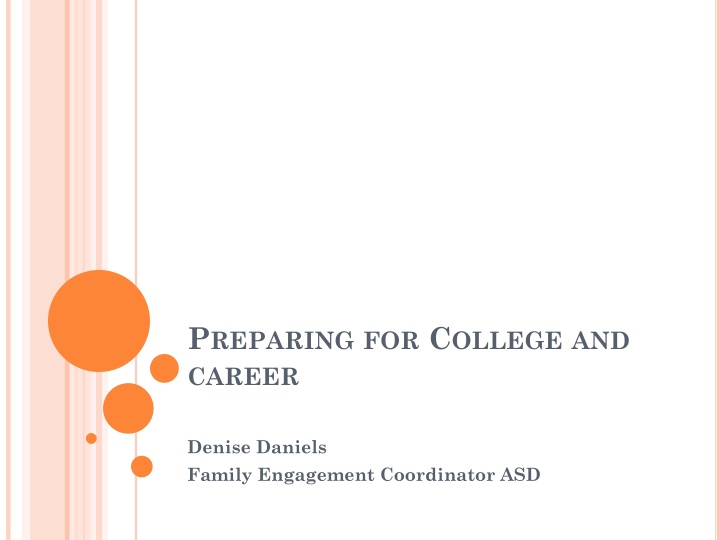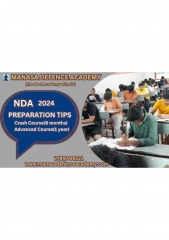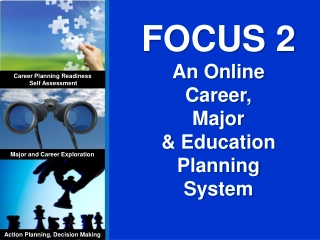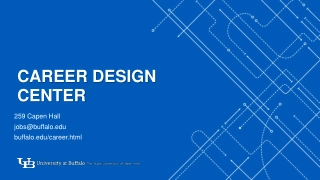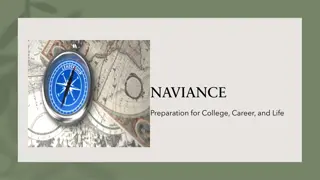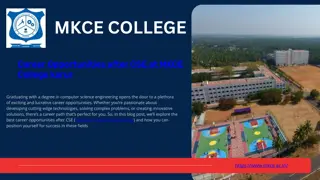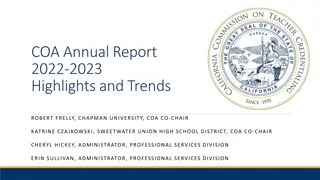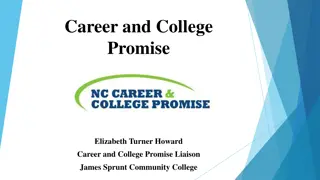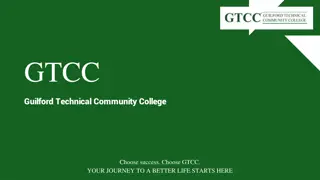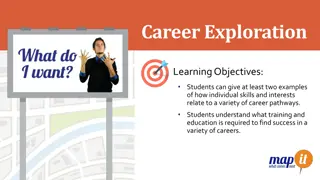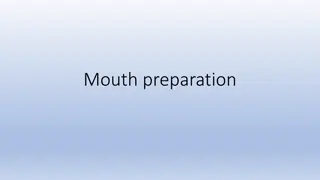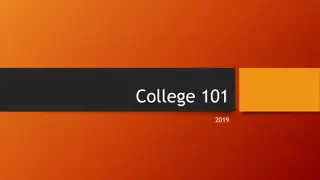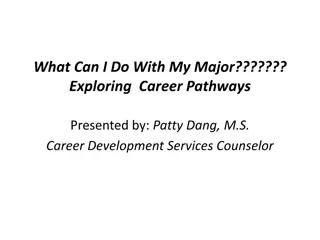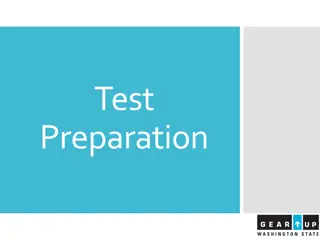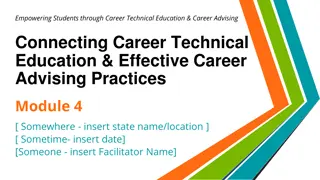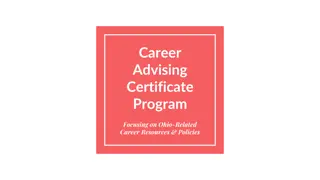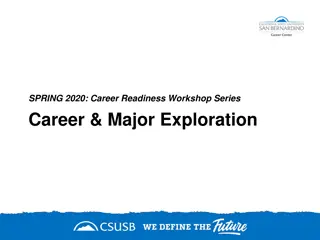College and Career Preparation Guide
Post-secondary education options, high school graduation requirements, testing information for PSAT and SAT, differences between SAT and PSAT, and details about the ACT exam. Get insights on navigating the path to college and career success.
Download Presentation

Please find below an Image/Link to download the presentation.
The content on the website is provided AS IS for your information and personal use only. It may not be sold, licensed, or shared on other websites without obtaining consent from the author.If you encounter any issues during the download, it is possible that the publisher has removed the file from their server.
You are allowed to download the files provided on this website for personal or commercial use, subject to the condition that they are used lawfully. All files are the property of their respective owners.
The content on the website is provided AS IS for your information and personal use only. It may not be sold, licensed, or shared on other websites without obtaining consent from the author.
E N D
Presentation Transcript
PREPARING FOR COLLEGE AND CAREER Denise Daniels Family Engagement Coordinator ASD
POST SECONDARY EDUCATION Undergraduate Options A.A. Degree- (Associates Degree): 2 Years B.A. Degree- (Bachelors Degree) : 4 Years Graduate Options M.A. (Masters Degree) Ph.D. (Doctorate-medical) Ed.D. (Doctorate-non-medical) Vocational/Technical/Trade Schools Job and Career Skills
THE PATH BEGINS RIGHT NOW Build an Expectation What is important to your student? What is important to you? What are the options to get there? Financial Planning!!
HIGH SCHOOL GRADUATION Know Graduation Requirements Graduation Toolkit (OPSI) Graduation Plan (High School) Other Options Graduation Equivalent Degree (G.E.D.) Community College (High School Completion Programs) GPA Cumulative in High School Better chances of transfer from CC to 4-year College credit with the Running Start Program
TESTING INFORMATION PSAT-Preliminary Scholastic Aptitude Test 9th 11thGrade SAT-Scholastic Aptitude Test 11thand 12thgrade ACT www.actstudents.org
PSAT Practice Scholastic Aptitude Test. Used for AP Potential Placement Evaluate Skills for College Scores used for National Merit Scholarship consideration and others when taken in 11th grade. Colleges offer grants to NMS finalists. Gives you an idea of how you will do on the SAT.
HOW IS IT DIFFERENT FROM THE SAT Structure: SAT has 10 sections; PSAT has 5 sections. Length: SAT is 3 hrs. 45 minutes; PSAT is 2 hrs. 10 minutes. Purpose: SAT is used for college admissions and scholarships; PSAT is used for National Merit Recognition and scholarships. Scoring: SAT has a possible score of 2400; PSAT has a possible score of 240. Obviously the scores correlate, so the PSAT helps you figure out what you ll score on the SAT.
ACT The ACT is a national college admissions examination that consists of subject area tests in: English, Mathematic, Reading, Science The ACT Plus Writing includes the four subject area tests plus a 30- minute Writing Test. ACT results are accepted by all four-year colleges and universities in the US. The ACT includes 215 multiple-choice questions and takes approximately 3 hours and 30 minutes to complete, including a short break (or just over four hours if you are taking the ACT Plus Writing). Actual testing time is 2 hours and 55 minutes (plus 30 minutes if you are taking the ACT Plus Writing). People of all ages and grade levels are eligible to take the ACT. This includes students in grades 6, 7, 8, and 9 and high school graduates. Of course you'll need to register and pay the test fees.
2013 LOCAL ADMISSIONS University of WA Percent of Applicants Admitted: 55% Test Scores -- 25th / 75th Percentile SAT Critical Reading: 520 / 650 SAT Math: 580 / 710 SAT Writing: 530 / 640 Seattle University Percent of Applicants Admitted: 73% Test Scores -- 25th / 75th Percentile SAT Critical Reading: 520 / 640 SAT Math: 530 / 630 SAT Writing: 520 / 630
MORE WSU Percent of Applicants Admitted: 82% Test Scores -- 25th / 75th Percentile SAT Critical Reading: 450 / 570 SAT Math: 460 / 580 SAT Writing: 440 / 550 WWU Percent of Applicants Admitted: 84% Test Scores -- 25th / 75th Percentile SAT Critical Reading: 490 / 620 SAT Math: 500 / 600 SAT Writing: - / -
HOW CAN I SUPPORT MY STUDENT? Research Resources Auburn School District www.auburn.wednet.edu My College Quickstart www.quickstart.collegeboard.o rg College and Career Counselors College Navigator http://nces.ed.gov/collegenavig ator/ OSPI www.k12.wa.us Free Application for Federal Student Aid www.fafsa.ed.gov College Board www.bigfuture.collegeboard.or g Scholarships www.thewashboard.org www.mycollegeoptions.org www.collegescholarships.org
HOW CAN I SUPPORT MY STUDENT? Attend student conferences/workshops Monitor student progress Arrange and attend college visits Attend college and career fairs Communicate with your students teachers Communicate with your student Ask Questions!!
REFERENCES Rowel, K. (2014). What's a good sat score? . Retrieved from http://testprep.about.com/od/sat/f/SATFAQ_Good SAT.htm Collegeboard.com www.actstudent.org
